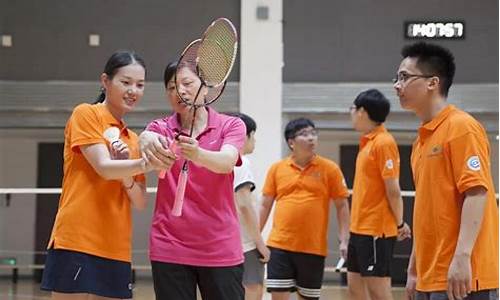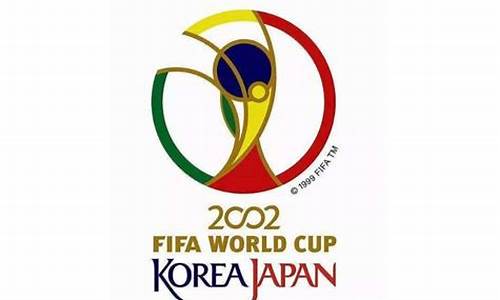您现在的位置是: 首页 > 体育新闻 体育新闻
北京fly羽毛球培训班_fly羽毛球培训
tamoadmin 2024-06-23 人已围观
简介1.随能回答一些我的关于羽毛球的问题2.一些羽毛球术语3.羽毛球专业术语介绍羽毛球的~~Badminton is a racquet sport played by either two opposing players (singles) or two opposing pairs (doubles). The players or pairs take positions on opposit
1.随能回答一些我的关于羽毛球的问题
2.一些羽毛球术语
3.羽毛球专业术语

介绍羽毛球的~~
Badminton is a racquet sport played by either two opposing players (singles) or two opposing pairs (doubles). The players or pairs take positions on opposite halves of a rectangular court that is divided by a net.
Unlike many racket sports, badminton does not use a ball: badminton uses a feathered projectile known as a shuttlecock. Since the shuttlecock is strongly affected by wind, competitive badminton is always played indoors.
General Description
The players strike the shuttlecock with their rackets so that it passes over the net and into the opponents' half of the court. The rally ends once the shuttlecock touches the ground: every stroke must be played as a volley. In doubles, either player of a pair may hit the shuttlecock (except on service), but only a single stroke is allowed before the shuttle passes again into the opponents' court (unlike volleyball). Players are awarded a point if the shuttlecock lands on or within the marked boundary of their opponents' court, or if their opponent's stroke fails to pass the net or lands outside the court boundary.
A rally begins with the service, in which the serving player must strike the shuttlecock so that, if left, it would land in the diagonally opposite service court. In doubles, only one player, the receiver, may return the service (thereafter either player may hit the shuttlecock); the order of doubles service is determined by the Laws, which ensure that all the players shall serve and receive in turn. If the server wins the rally, he will continue serving; if he loses the rally, the serve will pass to his opponent. In either case, the winner will add a point to his score.
A match consists of three games; to win each game players must score 21 points (exceptions noted below). There are five events: men's singles, women's singles, men's doubles, women's doubles, and mixed doubles (each pair is a man and a woman).
--------------------------------------------------
奥运项目介绍:羽毛球
About Badminton (Olympic sport since 1992)
羽毛球概述(1992年成为奥运会正式比赛项目)
Made-for-television radar guns instantly flash the speed of serves, volleys and pitches to the sporting public around the world these days, but few viewers could name the world's fastest racket sport. The title belongs to badminton.
为电视转播而专门制作的雷达测速仪能为全世界喜欢运动的人们即时显示出发球、接球和投球的时速,但是几乎没人能说出世界上最快的球拍类运动是什么。这个头衔是属于羽毛球的。
The flight of the shuttlecock, a missile of cork and goose feather that players volley across the net, has been recorded at speeds of 260 kilometres per hour. Speed, agility and lightning-fast reflexes are essential to the game. Add stamina, too - players have been known to cover more than six kilometres in a single match.
羽毛球由软木和鹅毛制成,飞行的最高时速可达260公里。选手在球落地前要将其接起并打过网。对于这项运动来说,速度、敏捷性和闪电般的反应能力都至关重要。还应该加上毅力,因为选手们在一场比赛中所奔跑的路程要超过6公里。
While contemporary badminton first appeared in the mid-19th century, it evolved from the game battledore and shuttlecock, which can be traced back to ancient Greece, China, Japan and India.
现代羽毛球运动在19世纪中叶首次出现,它是由一种名为“毽子板球”(battledore and shuttlecock)的运动发展演化而来的。“毽子板球”的起源可以追溯到古希腊、中国、日本和印度。今天,羽毛球运动在亚洲和欧洲尤为流行,它已经在1992年的奥运会中成为正式比赛项目。
Especially popular in Asia and Europe today, badminton became a full competition sport at the Olympic Games in 1992.
今天,羽毛球运动在亚洲和欧洲尤为流行,它已经在1992年的奥运会中成为正式比赛项目。
-----------------------------------------------
打羽毛球的益处
I think,playing badminton really makes you great-hearted.
That is ,playing badminton can strengthen my vital capacity and my muscle.Even makes you slim.
period of time later, maybe you will find yourself healthier than before.
According to the badminton training,you may find that your bounce become stronger,you can run faster than before.
我认为,打羽毛球真的会让人充满活力.
那就是,玩羽毛球能够加强我们的肺活量和我们的肌肉,甚至能够让你更加苗条.
一段时间之后,也许你会发现你自己比以前更加的健康。
通过羽毛球的训练,你也许会发现你的弹跳力比以前强,你跑得比别人快。
---------------------------------------------------------
羽毛球社英文介绍
Introduction of the Badminton Society
你可以分几个方面写,
材料就在上面啦~~
第一个部分~
Cultural Background
就写关于羽毛球的文化背景,历史什么的
上面有~
很详细的,
第二个部分~
About Activities
写社团平常什么时候组织一些活动啊什么的。
第三个部分,Construe~
具体介绍你们社团的情况~
例如人数啊。都是谁谁谁啊怎么怎么的,
具体自己按实际情况描述下就是了~
第四个部分~
Society divided into NNN parts
社团分为几个部分~~
各个部分都是干什么的 。
第五个部分~Prospect
前景,
写希望以后社团的发展啊未来啊什么什么的。
-------------------------------------------------------------------------------------------------------------
找了很久
希望能帮到你哈
随能回答一些我的关于羽毛球的问题
Badminton's origin have different opinions, the main argument of the following:
1, originated in Japan
According to legend, badminton first appeared in the 14-15 century in Japan, is a wooden racket, the ball is made with a cherry stuck feathers. This ball is the cherry as the shuttle, too, the ball flying too fast, so the ball can easily damage the feathers, plus the cost of the ball too high, it is fashionable for a while on the campaign slowly disappeared.
Second, in India
Approximately to the 18th century, India was the emergence of a universal and very similar to the early Japanese badminton game, the ball is about 6 cm in diameter cardboard circle, the middle plug badminton made (similar to our shuttlecock), the board is Wood, the play is both relative standing and holding a wooden bat back and forth.
3, was born in the United Kingdom
The birth of modern badminton in the United Kingdom, about 1800 or so, derived from the tennis. We noted that there are badminton and tennis venues are still very similar. In 1870, appeared with feathers, cork ball and do wear the racket strings. In 1873, the British Duke Baofu Te Bloomington in the county town of Glasgow estate had a badminton game show. Since then, badminton will be gradually unfolded, "Bloomington" which became the name of badminton, the English wording is "Badminton". At the time venues are gourd-shaped, two middle narrow width, narrow office hanging net, until 1901, only converted to rectangular.
In 1875, the world's first badminton rules of the game appeared in India, Pune. Three years later, the United Kingdom has designated more complete and uniform rules, the rules were too many changes of the content has yet to come.
In 1893, the world's first --- Badminton Badminton Association of England was established and organized in 1899 All England Badminton Championships.
1934, from Canada, Denmark, Britain, France, Ireland, Netherlands, New Zealand, Scotland and Wales and other countries launched the International Badminton Federation, based in London. Since then, increasing international competition badminton.
1934-1947, Denmark, the United States, Britain, Canada, Europe and the United States in the international badminton players rule the roost.
In 1948-1949 held the first World Badminton Championships Men - "Thomas Cup" race, the Malayan team won the championship, thus opening up an international badminton Asians dominating the era. In the 1948-1979 years of the 11th Thomas Cup, Indonesia won seven championships, won four championships in Malaysia. Early 60s, the Chinese team came from behind in 1963, the year 1964, the Indonesian team beat the world champion, victory in 1965, then the Nordic Zhu Qiang, known as "Wumianzhiwang" (because at that time China did not join the International Badminton Federation, can not participate in world championships) .
Women's World Badminton Championships --- "Uber Cup" competition held in 1956, the first 3 sessions were the Americans won the championship. From the late 60s, the advantage shifted to Asia, Japan and Indonesia teams swept the championship the previous race.
Since the 70's, men's badminton technology is leading the Indonesian team and the Chinese team. China first participated in the 1982 Thomas Cup team won the championship on. Chinese team's technology by the general praised the world badminton. The late 70s, Japan, Korea, Pakistan, Thailand, Malaysia and other countries and regions, badminton technology has made great strides in the international competition to obtain good results. Europe, Denmark, England, Sweden and other countries on the basis of the characteristics of the original play, draw extensively on the Asian technology and experience, technology steadily improved, still after all badminton crack. Women, it can be said that China, Indonesia, Japan, three-horse race. 1982, the Chinese team for the first time to participate in the All-England Championships, which won the women's singles finals and doubles champion. To the late 80s, Malaysia, South Korea has made great strides, has won the International Badminton Championship in men's team champion, doubles champion. Women, China, Indonesia continues to stay ahead of South Korea women's team to catch up to the Chinese team this year, Indonesia's main rival team.
February 1978, the World Badminton Federation was established in Hong Kong. May 1981, the International Badminton Federation and the World Badminton Federation official merger.
At present, the IBF already has more than 100 Member States. IBF world under the jurisdiction of competition are: Thomas Cup (world men's team championship), since 1948, held once every 3 years ( to held every two years); Uber Cup (World Women's Team Championship), in 1956, held once every 3 years ( to held every two years); World Championships (individual events), since 1977; All-England Championships (informal traditional one-way race), As early as 1899 started an annual event.
原文:
羽毛球运动的起源众说纷纭,主要的说法有以下几种∶
一、起源于日本
相传羽毛球最早出现于14-15世纪时的日本,球拍是木制的,球用樱桃核插上羽毛制成。这种球由于球托是樱桃核,太重,球飞行速度太快,使得球的羽毛极易损坏,加之球的造价太高,所以是该项运动时兴了一阵子就慢慢消失了。
二、出现在印度
大约至18世纪时,印度的普那出现了一种与早年日本的羽毛球极相似的游戏,球用直径约6厘米的圆形硬纸板,中间插羽毛球制成(类似我国的毽子),板是木质的,玩法是两人相对站着,手执木板来回击球。
三、诞生在英国
现代羽毛球运动诞生于英国,大约在1800年左右,由网球派生而来。我们可以注意到现今的羽毛球场地和网球场地仍非常相似。1870年,出现了用羽毛、软木做的球和穿弦的球拍。1873年,英国公爵鲍弗特在格拉斯哥郡伯明顿镇的庄园里进行了一次羽毛球游戏表演。从此,羽毛球运动便逐渐开展起来,“伯明顿”即成了羽毛球的名字,英文的写法是“Badminton”。那时的活动场地是葫芦形,两头宽中间窄,窄处挂网,直至1901年才改作长方形。
1875年,世界上第一部羽毛球比赛规则出现于印度的普那。三年后,英国又指定了更趋完善和统一的规则,当时规则的不少内容至今仍无太大的改变。
1893年,世界上最早的羽毛球协会---英国羽毛球协会成立,并于1899年举办了全英羽毛球锦标赛。
1934年,由加拿大、丹麦、英国、法国、爱尔兰、荷兰、新西兰、苏格兰和威尔士等国发起了国际羽毛球联合会,总部设在伦敦。从此,羽毛球国际比赛日渐增多。
1934-1947年,丹麦、美国、英国、加拿大等欧美选手称雄于国际羽坛。
在1948-1949年举行的首届世界男子羽毛球团体锦标赛--“汤姆斯杯”赛中,马来亚队荣获冠军,从而开辟了亚洲人称雄国际羽坛的时代。在1948-1979年间的11届汤姆斯杯赛中,印度尼西亚队夺得7次冠军,马来西亚队夺得4次冠军。60年代前期,中国队后来居上,1963年、1964年度打败世界冠军印尼队,1965年又全胜北欧诸强,被誉为“无冕之王”(因当时我国未加入国际羽联,不能参加世界性锦标赛)。
世界女子羽毛球团体锦标赛---“尤伯杯”赛于1956年开始举行,前3届冠军均被美国人夺得。从60年代后期起,优势转移到了亚洲,日本和印尼队包揽了历届比赛的冠亚军。
70年代以来,男子羽毛球技术处于领先地位的是印尼队和中国队。1982年中国队首次参加汤姆斯杯赛就荣获冠军。中国队的技术受到了世界羽坛的普遍赞扬。70年代后期,日本、韩国、巴基斯坦、泰国、马来西亚等国家和地区的羽毛球技术也有了长足的进步,在国际比赛中取得了较好的成绩。欧洲的丹麦、英国、瑞典等国在发挥原有特点的基础上,广泛吸取了亚洲人的技术和经验,技术水平稳步提高,至今仍不失为羽坛劲旅。女子方面,可以说是中国、印尼、日本三强鼎立。1982年中国队首次参加全英锦标赛,即获得了女子单打冠亚军和双打冠军。到了80年代后期,马来西亚队、韩国队有了长足的进步,多次获得国际羽毛球大赛的男子团体冠军、双打冠军。女子方面,中国、印尼继续保持领先,韩国女队迎头赶上,是今年来中国队、印尼队的主要对手。
1978年2月,世界羽毛球联合会于香港成立。1981年5月,国际羽毛球联合会和世界羽毛球联合会正式合并。
目前,国际羽联已拥有一百多个会员国。国际羽联管辖的世界性比赛有∶汤姆斯杯赛(世界男子团体锦标赛),从1948年开始,每3年举办一次(年起改为每两年举行一次);尤伯杯赛(世界女子团体锦标赛),从1956年开始,每3年举办一次(年起改为每两年举行一次);世界锦标赛(单项比赛),从1977年开始;全英锦标赛(非正式传统单向比赛),早在1899年开始每年举办一次。
一些羽毛球术语
编辑本段羽毛球的常用术语
一、羽毛球场地
羽毛球场地是一个长13.40米,双打宽6.10米,单打宽5.18米,场地中央被球网(两边柱子高1.55米,中间网高1.524米)平均分开的长方形场地(请参“比赛规则”中的附图)。
羽毛球场地横向被中线平分为左右两个半区;纵向被分为前场、中场、后场。前场就是从前发球线到球网之间的一片场地;后场是指从端线到双打后发球线之间的一片场地;中场是前发球线与双打后发球线之间的一片场地。
二、站位与击球
运动员站在羽毛球场上的位置称为站位。站位有两种情况∶一种是受限制的站位。如∶发球、接发球时运动员的站位,就必须按要求站在规定的区域内(左半区或右半区);另一种是不受限制的站位,可根据自己或同伴(双打)的需要而选择的站位。如∶单打的站位一般在离前发球线1米左右的中线附近,双打站位可根据双打两个运动员的具体战术需要而选择前后或左右的站位。
根据以上对羽毛球场地的划分,又可把不受限制的站位具体分为∶左半区站位、右半区站位、前场站位、中场站位、后场站位。
击球是指运动员挥拍击球时,拍与球接触的一刹那。运动员站在左半区迎击对方来球叫做左半区击球,在右半区的击球叫做右半区击球,站在前场、中场、后场的击球,则分别叫做前场击球、中场击球、后场击球。除此之外,根据来球高度的不同,我们又可分为上手击球(高于肩的来球,击球点在肩上)和下手击球 (击球点低于肩)。
三、持拍手与非持拍手
持拍手是指正握着球拍的手。非持拍手是指没有握拍的手。
在羽毛球运动中,我们经常听说的正手技术、反手技术、正手击球、反手击球等术语。所谓正手技术是指握拍手同侧的技术;反手技术是指握拍手异侧的技术。如∶右手握拍的运动员,在击右侧球时所用的技术就称为正手技术,并由此派生出正手发球技术、正手击球技术等技术名称。
在羽毛球运动中,非持拍手的功能主要是在发球时用来持球、抛球;在击球过程中用来平衡身体,以便更有效地击球。
四、击球的基本线路
所谓击球线路是指球被运动员击出后在空中运行的轨迹和场地之间的关系。
羽毛球运动员击球线路之多是无法胜数的,以下只研究决定羽毛球线路规律的几条基本线路。
我们仅以运动员(右手持拍)正手击出三条球路来分析一下球的路线的名称。第一条从自己的右方打到对方的左方(线路与边线平行)可称为直线,第二条打到对方的右方(线路与边线有较大的角度)可称为对角线,第三条打到对方的中线球线路与边线有较小的角度)可称为中路。同理,反手后场(中场、前场)的三条(击基本击球线路,亦可这样称呼。在具体称呼时,可与正手、反手结合在一块。如∶正手直线、正手中路、正手对角线、反手对角线等。若在中线击球时,可这样称呼:打到对方场区的左方为左方斜线,打到对方场区的右方为右方斜线,打到中间为中路球。在对羽毛球线路的称呼上应注意如下问题:首先要看击球点和球的落点靠近哪里,击球点靠近右边线,而落点靠近中线,都成为正手中路球。其次要根据击球时所用技术名称,如反手搓球,可成为反手搓直线、反手搓中路球等。
总之,羽毛球的基本线路可分为五条,即:左方直线、中路直线、右方直线、右方斜线(右方对角线)、左方斜线(左方对角线)。而根据击球运动员站的位置(左、中、右),每个位置又可分别击出直线、中路、斜线,因此又可派生出九条线路来。羽毛球的击球线路之多无法描述,但其基本线路就那么几条,只要我们掌握了其规律,对我们的训练、比赛都是大有益的。
五、拍形角度与拍面方向
拍形角度是指球拍面与地面所成的角度。拍面方向是指球拍的拍面所朝向的位置。
拍形角度可分为七种∶拍面向下、拍面稍前倾、拍面前倾、拍面垂直、拍面后仰、拍面稍后仰、拍面向上。
拍面方向可分为三种∶拍面朝左、拍面朝右、拍面朝前。
拍形角度和拍面方向控制的好坏对击球质量的影响是非常大的,所以我们必须在每一次击球中认真调整好拍形、拍面,击出合乎质量要求的球来。
六、击球点
所谓击球点是运动员击球时球拍与球相接触那一点的时间、空间位置。
击球点包括三个方面的内容:第一包括拍和球的接触点距地面的高度;第二包括接触点距身体的前后距离;第三包括距身体的左右距离。对击球点选择得是否合适,将决定着击球质量的好坏,它将直接影响着运动员击球的力量、速度、弧线、落点,最终将导致影响运动员击球的命中率,造成失分,直至失败。因此选择合适的击球点至关重大。选择合适的击球点应做到如下两点:第一判断要准,第二步法移动要到位(步法要快)。只要做到了这两点才能保证调整在最合适的位置,击球点才有保障。
现代羽毛球运动起源于英国,据说1860年在英格兰,格拉斯哥郡的倍明顿庄园举行宴会上,由于下雨,客人们只能呆在室内,有几个从印度回来的退役军官就向大家介绍了一种隔网用拍子来回击打毽球的游戏,人们对此产生了很大的兴趣。后来人们就以倍明顿(Badminton)作为次项运动的名称。1893年英国成立了羽毛球协会,1899年举行了第一届全英羽毛球锦标赛。此后羽毛球运动就传到了世界各地。
羽毛球运动是深受广大群众喜爱的小型球类运动。由于它的运动器材简便,不受场地限制,两把拍子一个球,无论走到哪里,无论有网无网,无论室内、室外,只要有一小块空地,就能进行活动和锻炼。羽毛球运动特有的风格,它一方面是一项技巧性很强的竞技性比赛项目,另一方面,它是一项普及性很强,老少皆宜的活动。既能强身健体,又充满乐趣。无论是从事竞技性运动,还是一般性的大众健身活动,多需要在场上不停地移动跳跃、转体、挥拍击球。因此,青年男女经常进行羽毛球锻炼,能促进生长发育,提高身体各方面的机能,培养不怕困难,不甘心落后,顽强的拼博精神,从而提高身体素质和身心健康。
style="font-size: 18px;font-weight: bold;border-left: 4px solid #a10d00;margin: 10px 0px 15px 0px;padding: 10px 0 10px 20px;background: #f1dada;">羽毛球专业术语
一、羽毛球
羽毛球应有16根羽毛固定在球托部,羽毛长64毫米至70毫米,但每一个球的羽毛从托面到羽毛尖的长度应一致。羽毛顶端围成圆形,直径为58毫米至68毫米,球托直径25毫米至28毫米,底部为圆形,羽毛球重4.6克至5.50克。而对于非羽毛制成的球,我们则要求制成裙状,质量、性能不得超过10%的差距。对于比赛用球,必须经过检验才能用,正确方法是:站在端线,低手向前上方全力击球,球的飞行方向与边线平行,一个合格的球,应落在离对方端线53~99厘米之间。
二、.羽毛球拍
现在流行的球拍主要有:铝合金拍框钢杆拍、铝合金框碳杆拍以及由以碳素为主材料的合成纤维拍。一支球拍的长度不超过68厘米,其中球拍柄与球拍杆长度不超过40厘米,拍框长度为28厘米,宽为23厘米,随着科学技术的发展,球拍的发展向着重量越来越轻、拍框越来越硬、拍杆弹性越来越好的方向发展。
三、羽毛球网
羽毛球网全长610厘米,宽76厘米,球网的最上端7.5厘米的白色对折缝合,用细钢丝绳从中穿过,并悬挂在两端的网柱上(球网中心距离地面高度为1.524米,在网柱上的两端距地面1.55米)球网一般用深绿色或深褐色的优质绳子,以2厘米左右的小方孔编制而成.
四、羽毛球柱
羽毛球网柱高1.55米,用铁制材料制成.标准的网柱由柱杆及柱底盘两部分组成,靠近柱杆中部设有一滑轮装置,用于括紧拉球网的绳索,柱底盘由有一定份量的铁块构成,同柱杆下端连接在一起,以保证网柱重心的平衡.
五、站位与击球
运动员站在羽毛球场上的位置称为站位。站位有两种情况∶一种是受限制的站位。如∶发球、接发球时运动员的站位,就必须按要求站在规定的区域内(左半区或右半区);另一种是不受限制的站位,可根据自己或同伴(双打)的需要而选择的站位。如∶单打的站位一般在离前发球线1米左右的中线附近,双打站位可根据双打两个运动员的具体战术需要而选择前后或左右的站位。
根据以上对羽毛球场地的划分,又可把不受限制的站位具体分为∶左半区站位、右半区站位、前场站位、中场站位、后场站位。
击球是指运动员挥拍击球时,拍与球接触的一刹那。运动员站在左半区迎击对方来球叫做左半区击球,在右半区的击球叫做右半区击球,站在前场、中场、后场的击球,则分别叫做前场击球、中场击球、后场击球。除此之外,根据来球高度的不同,我们又可分为上手击球(高于肩的来球,击球点在肩上)和下手击球 (击球点低于肩)。
六、持拍手与非持拍手
持拍手是指正握着球拍的手。非持拍手是指没有握拍的手。
在羽毛球运动中,我们经常听说的正手技术、反手技术、正手击球、反手击球等术语。所谓正手技术是指握拍手同侧的技术;反手技术是指握拍手异侧的技术。如∶右手握拍的运动员,在击右侧球时所用的技术就称为正手技术,并由此派生出正手发球技术、正手击球技术等技术名称。
在羽毛球运动中,非持拍手的功能主要是在发球时用来持球、抛球;在击球过程中用来平衡身体,以便更有效地击球。
七、击球的基本线路
所谓击球线路是指球被运动员击出后在空中运行的轨迹和场地之间的关系。
羽毛球运动员击球线路之多是无法胜数的,以下只研究决定羽毛球线路规律的几条基本线路。
我们仅以运动员(右手持拍)正手击出三条球路来分析一下球的路线的名称。第一条从自己的右方打到对方的左方(线路与边线平行)可称为直线,第二条打到对方的右方(线路与边线有较大的角度)可称为对角线,第三条打到对方的中线球线路与边线有较小的角度)可称为中路。同理,反手后场(中场、前场)的三条(击基本击球线路,亦可这样称呼。在具体称呼时,可与正手、反手结合在一块。如∶正手直线、正手中路、正手对角线、反手对角线等。若在中线击球时,可这样称呼∶打到对方场区的左方为左方斜线,打到对方场区的右方为右方斜线,打到中间为中路球。在对羽毛球线路的称呼上应主义如下问题∶首先要看击球点和球的落点靠近哪里,击球点靠近右边线,而落点靠近中线,都成为正手中路球。其次要根据击球时所用技术名称,如反手搓球,可成为反手搓直线、反手搓中路球等。
总之,羽毛球的基本线路可分为五条,即∶左方直线、中路直线、右方直线、右方斜线(右方对角线)、左方斜线(左方对角线)。而根据击球运动员站的位置(左、中、右),每个位置又可分别击出直线、中路、斜线,因此又可派生出九条线路来。羽毛球的击球线路之多无法描述,但其基本线路就那么几条,只要我们掌握了其规律,对我们的训练、比赛都是大有益的。
八、拍形角度与拍面方向
拍形角度是指球拍面与地面所成的角度。拍面方向是指球拍的拍面所朝向的位置。
拍形角度可分为七种∶拍面向下、拍面稍前倾、拍面前倾、拍面垂直、拍面后仰、拍面稍后仰、拍面向上。
拍面方向可分为三种∶拍面朝左、拍面朝右、拍面朝前。
拍形角度和拍面方向控制的好坏对击球质量的影响是非常大的,所以我们必须在每一次击球中认真调整好拍形、拍面,击出合乎质量要求的球来。
九、击球点
所谓击球点是运动员击球时球拍与球相接触那一点的时间、空间位置。
击球点包括三个方面的内容∶第一包括拍和球的接触点距地面的高度;第二包括接触点距身体的前后距离;第三包括距身体的左右距离。对击球点选择得是否合适,将决定着击球质量的好坏,它将直接影响着运动员击球的力量、速度、弧线、落点,最终将导致影响运动员击球的命中率,造成失分,直至失败。因此选择合适的击球点至关重大。选择合适的击球点应做到如下两点∶第一判断要准,第二步法移动要到位(步法要快)。只要做到了这两点才能保证调整在最合适的位置,击球点才有保障
羽毛球专业术语羽毛球 badminton
换发球 alternate in servint
发球区 half court
发球权 right to serve
左场区 left square
发球犯规 foul hit
右场区 right square
发球违例 faulty serving
反手区 backhand court
交换发球区 alternate courts
中线 midcourt line
直接得分的发球 ace
边线 side boundary
交换发球区 alternate courts
端线 backcourt
发高远球 deep high service
死球 deab bird
前发球场 short service line
打对角线球 cross court shot
单打球场 singles court
封角近网球 crosscourt net fly
双打球场 doubles court
封角近网球 crosscourt flight
双打发球线 doubles service line
右发球区 right service court
高远球 clear
双打发球区 doubles service court
曲线近网球 cross curve net fly
单打发球区 singles service court
单双打边线之间地带 side alley
下蹲防守 crouch defende
双打球场 doubles court
单双打两用球场 combination court
双打发球区 doubles service court
双打发球线 doubles service line
dribble
平抽球,快平球 drive
贴网快平秋 driven flight
吊球 drop
短吊,轻吊,短球 drop shot
吊球 drop spike
发球违例 faulty scrving
换发球,双打中一方轮流发球 alternate in serving boundary
混合双打 mixd-double
男单men's singles 1. 1. 2 the first singles(or ect) Of the
Thomas Cup (or etc) tie between
1. 2. 1 on my right ...... (player name),
and on my left...... (player name)
1. 2. 2 on my right.. .... (country/team
name), represented by.. ....
(player name), and on my left
...... (country/team name), represented by...... (player name )
1. 3. 1 ...... (player name) to serve
1. 3. 2.. .... (country/team name) to serve
1. 4. 1.. .... (player name) to serve to. ....(player name)
1. 4. 2 ...... (player name) to .. .... (playername )' point 8', or'16 match point l4' point all', or'16 game point all' 2.9 'Are you setting?'
2.9.1 'Game not set; playing to l5(ll )points 2. 14 'Court... (number) 'One minute' 2.比赛开始及报分 3. 19 You obstructed your opponent.
3. 20 Are you retiring?
3. 21 Fault -- receiver
3. 22 Service fault called
3. 23 Play must be continuous
3. 24 Play is suspended
3. 25'.. .... (name of player) warning for misconduct'
3. 26' ...... (name of player) fault for misconduct'
3. 27 Fault
3. 28 Out
3. 29 Line judge -- signal
3. 30 Service judge -- signal
3. 31 First server
3. 32 Second server
3. 33 Wipe the court
3.一般用语
3.1准备好了吗?
3. 2到这里来。
3.3这个球可以吗?
3.4试球。
3.5换球。
3.6不换球。
3.7重发球。
3.8交换场区。
3.9你发球顺序错误。
3.10你接发球顺序错误。
3.11你不得干扰这个球。
3.12球触及你。
3.13你触网。
3.14你站错区。
3.15你分散对方注意力。
3.16你两次击球。
3. 17你“拖带”。
3. 18你侵入对方场区。
3.19你妨碍对方。
3.20你放弃比赛吗?
3. 21接发球违例。
3.22发球违例。
3. 23继续比赛。
3.24比赛暂停。
3.25警告,……(运动员姓名)行为不端。
3.26违例,……(运动员姓名)行为木端。
3.27违例。
3. 28界外。
3.29司线员——做手势。
3.30发球裁判员——做手势。
3.31第一发球。
3.32第二发球。
3.33擦地板。
4. End of MatCh
4. 1 Match won by.. .... (name of player/team)'...' (scores)
4. 2 '...' (name of player/team) 'retired'
4. 3 '...' (name of player/team) 'disqualified'
4.比赛结束
4.l比赛结果……(运动员姓名或队名)胜,……(各局比分)。
4.2……(运动员姓名或队名),放弃比赛。
4.3……(运动员姓名或队名),取消比赛资格。









